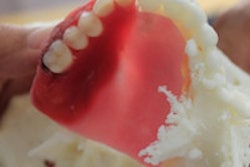Transcrestal surgical techniques for maxillary sinus floor elevation offer an alternative for reconstructive surgery of the mandible prior to the placement of dental implants, according to a pilot study in the Journal of Oral Implantology (August 2012, Vol. 38:4, pp. 345-359).
Transcrestal surgery is a procedure that increases bone volume and prepares the upper jaw for dental implants, the journal explained in a press release. The study authors, from Loma Linda University School of Dentistry, sought to determine if any of the transcrestal techniques carried a greater risk of surgical complications.
Perforation of the sinus membrane is the most common surgical complication associated with maxillary sinus floor elevation. Perforations have been linked to acute or chronic sinus infection, edema, bleeding, loss of bone graft material, and failure of the implant, the study authors noted.
The conventional method for this procedure is the lateral approach, which gains surgical access through the zygomatic bone bordering the maxillary sinus cavity. While this is an invasive technique, there is a low incidence of complications. A less invasive procedure uses a crestal approach through the osteotomy prepared for dental implant placement. However, this is a sensitive technique that restricts the surgeon's direct visual examination.
The current study used 20 human cadaver specimens with 40 intact sinuses as test subjects for three transcrestal surgical techniques. One experimental group used DASK (dentium advanced sinus kit; Dentium), which features specially designed surgical drills to apply mechanical and hydraulic pressure. Another experimental group received a surgical protocol that permitted entry into the sinus through crestal bone that had been eliminated during site preparation. A control group was treated with the osteotome/crestal sinus membrane elevation technique.
Postoperative assessment of the specimens determined whether membrane perforation had occurred. Direct visual endoscopy, cone-beam CT, and periapical radiographs were used.
While the study found endoscopy to be the preferred form of detecting membrane perforations, no significant differences were found in the rate of perforations among the surgical techniques used, the researchers concluded.



















